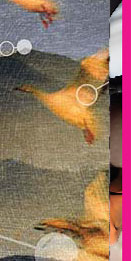 Full Conference Full Conference |
 Full Conference One-Day Full Conference One-Day |
|
 フルカンファレンス フルカンファレンス |
 1日券 1日券 |
Predictive Rendering
Friday, 18 December | 5:30 AM - 2:30 PM | Room 513
This course intends to serve two closely related purposes: to provide an accurate definition of the term "predictive rendering" and to present the technological foundations for research in this area. The first goal of the course (a clear definition of the term) seems to be necessary due to the extreme prevalence of its antonym: believable rendering. Practically all contemporary production graphics, as well as most current graphics research efforts, fall into the latter category. The second (much larger and technical) part of the course presents the foundations of current predictive rendering. Unlike believable rendering, where any technology that delivers visually convincing results is acceptable for a given task, a predictive pipeline has the fundamental problem that all components have to be of a uniformly high quality to ensure a reliable result. The course describes an entire predictive pipeline, and for each stage it presents the graphics technologies (in some cases surprisingly few) that can be used in such a context. This course should enable anyone with a background in graphics to bootstrap a basic predictive rendering environment that can support further research.
Level
Advanced
Presentation Language
Presented in English
Prerequisites
Even though the course presents the state of the art in a fashion that is easy to follow, solid prior understanding of contemporary rendering technology (especially optics, the interactions of light and matter, stochastic rendering, and HDR display issues) is very beneficial.
Instructor(s)
Alexander Wilkie Charles University in Prague Alan Chalmers Warwick University Andrea Weidlich Technische Universität Wien Marcus Magnor Technische Universität Braunschweig Kai Berger Technische Universität Braunschweig
Instructor Bio(s)
Alexander Wilkie Currently a senior lecturer at Charles University in Prague, Alexander Wilkie achieved his habilitation in applied computer science from Technische Universität Wien in June 2008, and from 2000 to 2008 he was an assistant professor at that university, where he obtained both his masters degree (1996) and PhD (2001) in computer science. His main research interests are predictive rendering, color science, and appearance modelling. He has authored numerous peer-reviewed papers about computer graphics and has extensive teaching experience in the areas of photorealistic rendering and color science at Technische Universität Wien and Charles University
Alan Chalmers Alan Chalmers has an MSc with distinction from Rhodes University (1985) and a PhD from the University of Bristol (1991). He has published over 140 papers in journals and international conferences on high-fidelity graphics, parallel rendering, and virtual archaeology. He is honorary president of Afrigraph and former Vice President of ACM SIGGRAPH. In addition, he is a member of the editorial board for the journals ACM Transactions on Applied Perception and Parallel Computing. His research goal is "realism in real time": obtaining physically based realistic images at interactive rates through a combination of parallel processing and visual-perception techniques. Marcus Magnor Marcus Magnor heads the Computer Graphics Lab of the Computer Science Department at Technische Universität Braunschweig. He received his BA (1995) and MS (1997) in physics from the University of Wüzburg and the University of New Mexico, respectively, and his PhD (2000) in electrical engineering from the Telecommunications Lab at Universität Erlangen-Nürnberg. For his post-graduate studies, he joined the Computer Graphics Lab at Stanford University. In 2002, he established the Independent Research Group Graphics-Optics-Vision at the Max-Planck-Institut für Informatik in Saarbrücken. He completed his habilitation and received the venia legendi in computer science from Universität des Saarlandes in 2005. Andrea Weidlich Andrea Weidlich is currently an assistant professor at Technische Universität Wien, where she graduated in 2005 with a MSc in computer science and a MSc in computer science management. She defended her PhD thesis in March 2009. Her current research interests include predictive rendering with a special focus on gemstone prototyping and appearance modeling.


